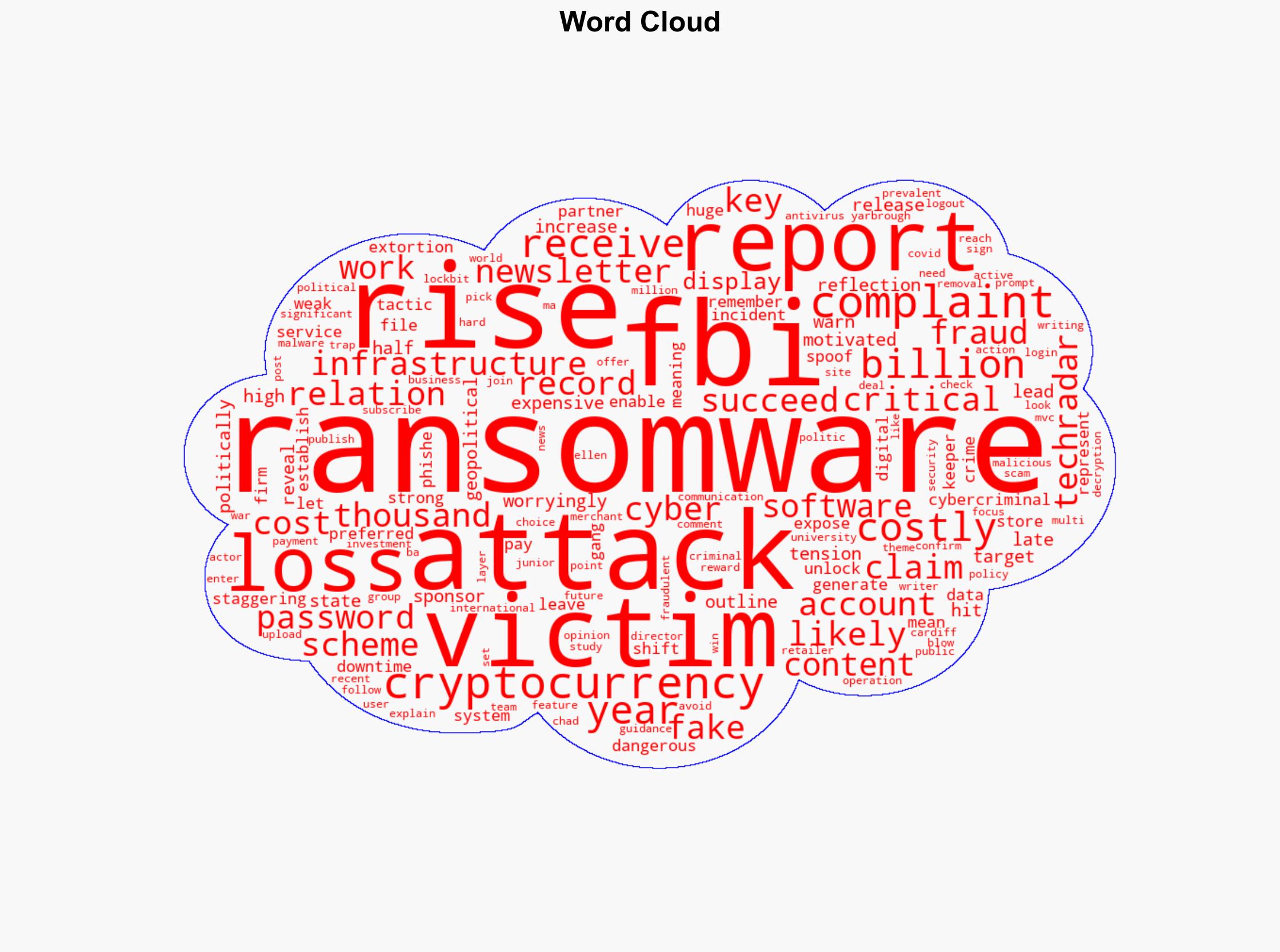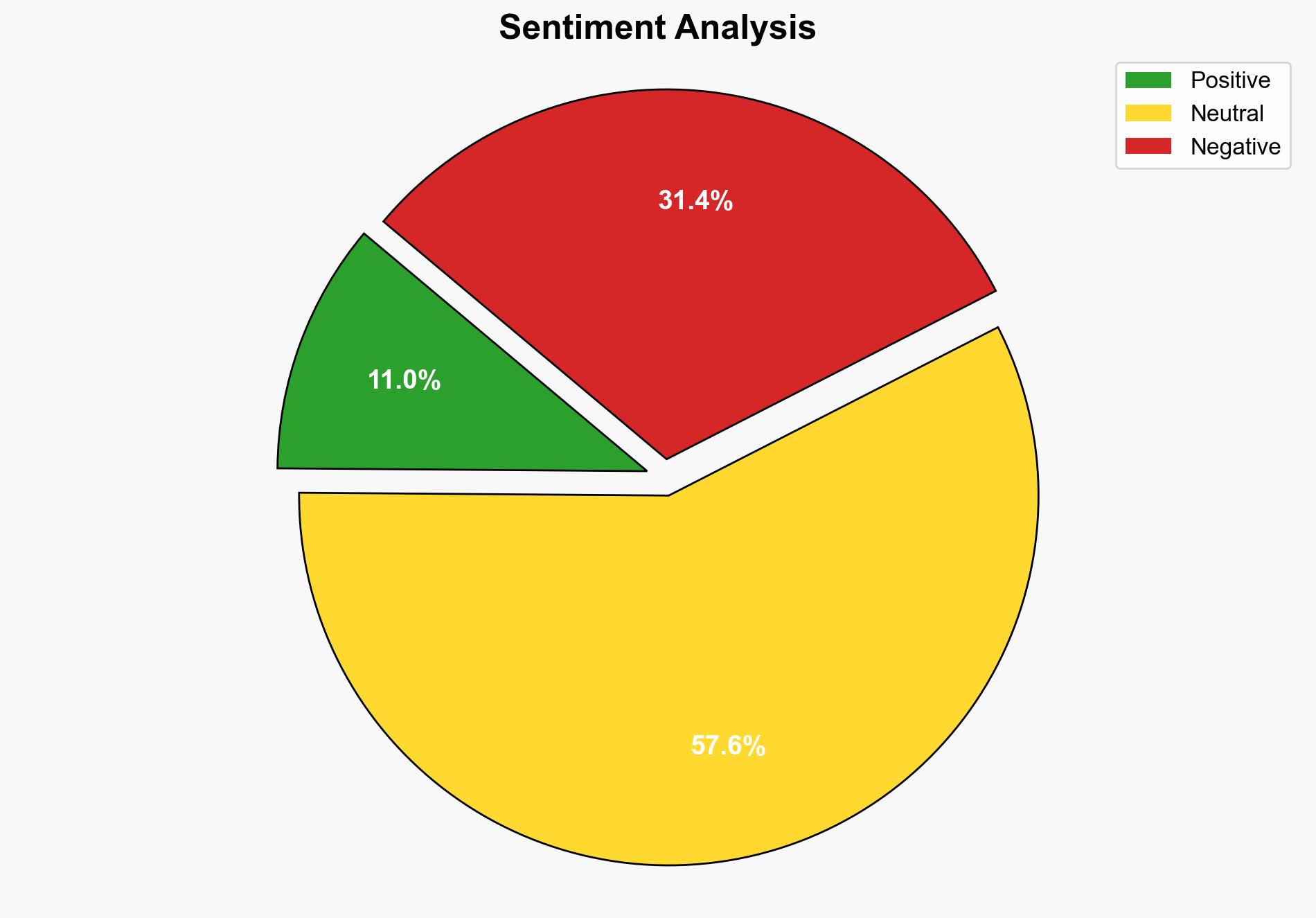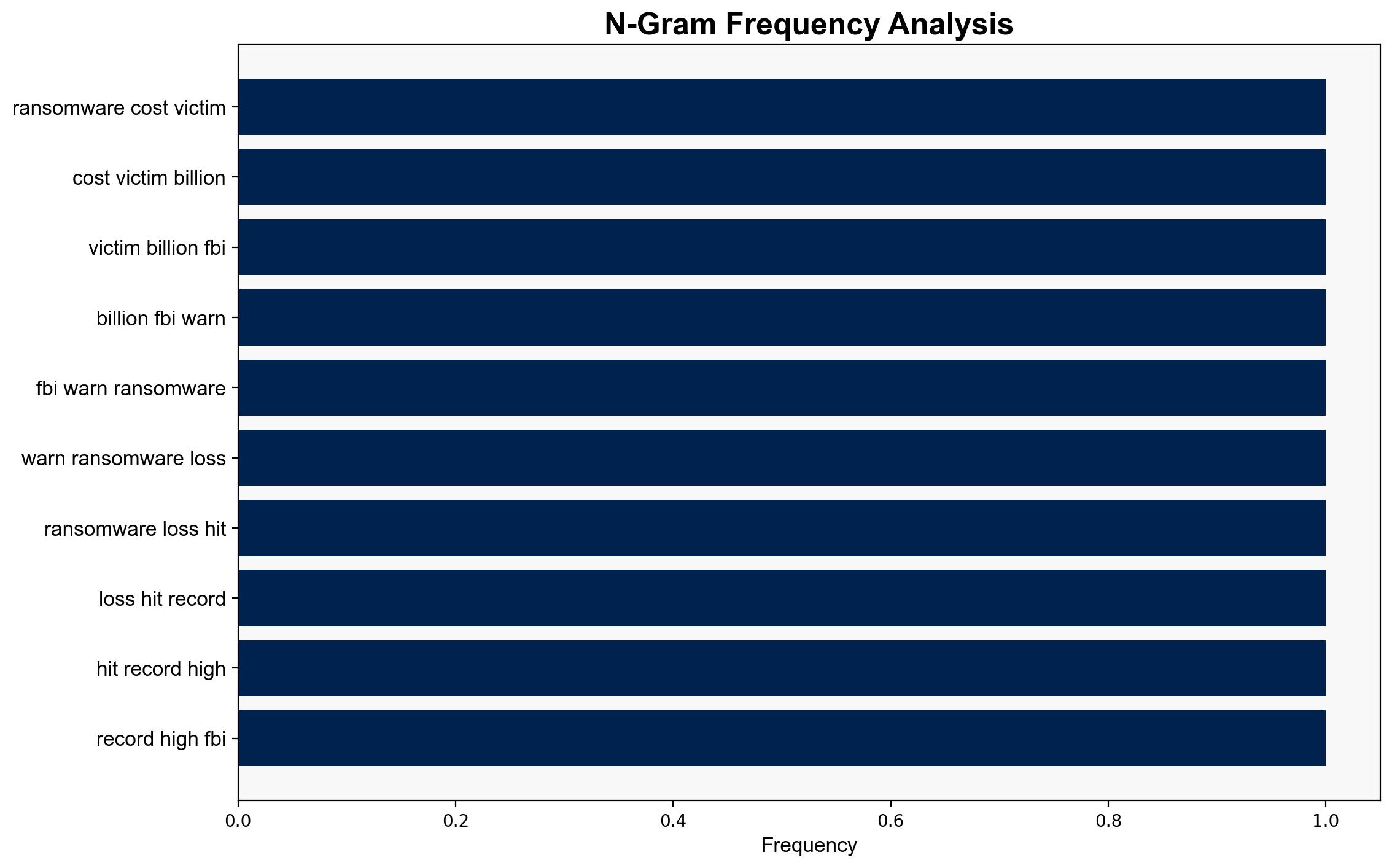Ransomware cost US victims 166 billion in 2024 FBI warns – TechRadar
Published on: 2025-04-24
Intelligence Report: Ransomware Cost US Victims $166 Billion in 2024 – FBI Warning
1. BLUF (Bottom Line Up Front)
The FBI reports that ransomware attacks cost US victims $166 billion in 2024, marking a record high. Critical infrastructure accounts for half of the complaints, reflecting increased geopolitical tensions and state-sponsored cyber activities. The rise in cryptocurrency fraud and ransomware incidents highlights significant vulnerabilities in digital security frameworks. Immediate enhancement of cybersecurity measures and strategic collaboration between public and private sectors are recommended to mitigate these threats.
2. Detailed Analysis
The following structured analytic techniques have been applied to ensure methodological consistency:
Analysis of Competing Hypotheses (ACH)
The primary hypotheses considered include increased state-sponsored cyber activities, the proliferation of ransomware-as-a-service models, and the exploitation of weak cybersecurity postures in critical infrastructure. Evidence strongly supports the hypothesis of state-sponsored activities due to geopolitical tensions.
SWOT Analysis
Strengths: Existing cybersecurity frameworks and partnerships.
Weaknesses: Insufficient protection of critical infrastructure and reliance on outdated systems.
Opportunities: Enhanced international cooperation and investment in advanced cybersecurity technologies.
Threats: Increasing sophistication of ransomware attacks and geopolitical tensions.
Indicators Development
Key indicators include increased phishing campaigns, lateral movement within networks, and the emergence of new ransomware variants. Monitoring these indicators can provide early warning of potential attacks.
3. Implications and Strategic Risks
The surge in ransomware attacks poses significant risks to national security, economic stability, and public safety. The targeting of critical infrastructure could lead to cascading effects, disrupting essential services and undermining public confidence. The intersection of cyber threats with geopolitical tensions exacerbates these risks, necessitating a comprehensive and coordinated response.
4. Recommendations and Outlook
- Enhance cybersecurity protocols across critical infrastructure sectors, focusing on resilience and rapid response capabilities.
- Foster public-private partnerships to share threat intelligence and best practices.
- Implement scenario-based planning to prepare for potential escalation in cyber threats. Best case: Improved defenses reduce successful attacks. Worst case: Continued escalation leads to significant disruptions. Most likely: Incremental improvements mitigate some risks but challenges persist.
5. Key Individuals and Entities
Chad Yarbrough
6. Thematic Tags
(‘national security threats, cybersecurity, counter-terrorism, regional focus’, ‘cybersecurity’, ‘counter-terrorism’, ‘regional focus’)





